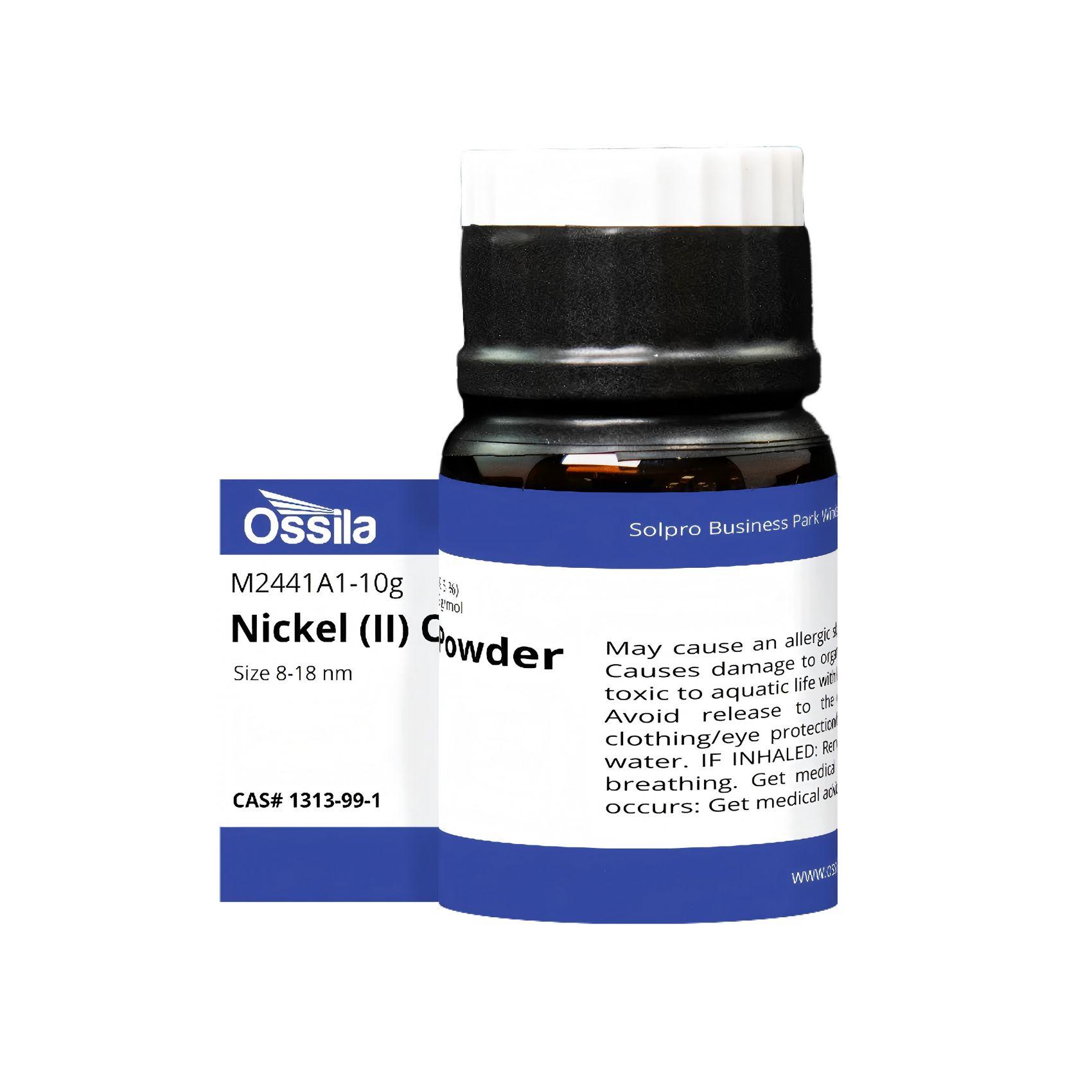
Nickel (II) oxide (CAS No. 1313-99-1), also known as NiOx, adopts a face-centre cubic crystalline structure. It has been used to produce frits, ferrites, and porcelain glazes. In recent years, nickel (II) oxide finds application as a hole-transport layer (HTL) material in perovskite solar cells. HTL of nickel (II) oxide processes high conductivity of 2.45 × 10-2 mS/cm and strong hole-extraction ability (7.01×10-3 cm2/V⋅s). This HTL layer enables the inverted perovskite solar cell to achieve a powder conversion efficiency (PCE) of 22.62%.
Nickel (II) oxide is also applied in supercapacitors. The supercapacitor fabricated from nickel (II) oxide nanopowder exhibits specific capacitance of 605 F/g at 5A/g and cyclic stability of 500 cycles.
As an energy material, nickel (II) oxide is used as a cathode material in batteries. A paper-based battery featuring nickel (II) oxide powder demonstrates a maximum current density of 1.94 mA/cm2 and power density of 1 mW/cm2.
General Information
CAS Number 1313-99-1
Chemical Formula NiO
Full Name Nickel (II) oxide
Molecular Weight 74.69 g/mol
Synonyms Nickel monoxide, Nickel oxide (NiO), Bunsenite, Oxonickel, NiOx
Classification or Family Perovskite solar cells, Batteries, Supercapacitors, Energy materials, HTL materials
Product Details
Average Particle Size 8–18 nm
Purity 99.5%
Specific Surface Area > 95 m2/g
Bulk Density 0.8 g/cm3
True Density 6.8 g/cm3
Melting Point 1984 °C
Appearance Dark grey powder